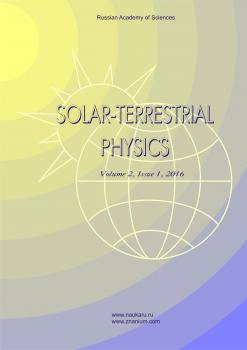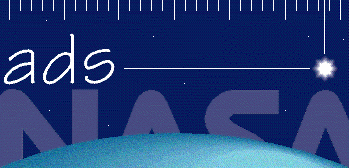IRE im. V.A. Kotel'nikova RAN
Fryazino, Moscow, Russian Federation
Moscow, Russian Federation
Using data from the GPS and GLONASS navigation satellite systems, we analyze the responses of the mid-latitude ionosphere to the extreme solar flares that occurred at the maximum of solar cycle 23 (October 28, 2003) and at the minimum of solar cycle 24 (September 6, 2017) during the same season at close solar zenith angles. To obtain the response, we use the rate of change of the total electronic content, which is practically independent of characteristics of equipment and is determined only by parameters of a propagation medium (the ionosphere in our case). The ionospheric response is shown to be almost independent of the total duration of the flare. In both cases, the duration of the main response at a level of 0.5 is about 1.5–2 min, whereas the total duration of the response is about 10 min and fairly independent of solar flare importance.
ionosphere, solar flares, navigation satellite systems, radio translucence method, electron content
1. Afraimovich E.L. GPS global detection of the ionospheric response to solar flares. Radio Sci. 2000, vol. 35, pp. 1417-1424. DOI:https://doi.org/10.1029/2000RS002340.
2. Afraimovich E.L., Perevalova N.P. GPS-monitoring verkhnei atmosfery Zemli [GPS Monitoring of the Earth’s Upper Atmosphere]. Irkutsk, 2006, 480 p. (In Russian).
3. Andrianov V.A., Smirnov V.M. Determining a height profile of Earth’s ionosphere electron density from double-frequency measurements of satellite radio signals. Radiotekhnika i elekctronika [J. of Communications Technology and Electronics]. 1993, vol. 38, no. 7, pp. 1326-1335. (In Russian).
4. Andrianov V.A., Armand N.A., Mosin E.L., Smirnov V.M. Results of using NAVSTAR navigation system for Earth’s ionosphere monitoring. Issledovanie Zemli iz kosmoca [Izvestiya, Atmospheric and Oceanic Physics]. 1996, no. 2, p. 10. (In Russian).
5. Andrianov V.A., Mosin E.L., Smirnov V.M. Determining regular variations of the Earth’s ionosphere F2 region from measurements of signal parameters of navigation satellites. Issledovanie Zemli iz kosmoca [Izvestiya, Atmospheric and Oceanic Physics]. 2000, no. 1, p. 15. (In Russian).
6. Avakyan S.V., Vdovin A.I., Pustarnakov V.F. Ioniziruyushchee i pronikayushchee izluchenie v okolozemnom kosmicheskom prostranstve [Ionizing and Penetrating Radiation in the Near-Earth Space]. Saint Petersburg, Gidrometeoizdat Publ., 1994, 501 p. (In Russian).
7. Belov A.V., Gaidash S.P., Ivanov K.G., Kanonidi Kh.D. Unusually high geomagnetic activity in 2003. Cosmic Res. 2004, vol. 42, no. 6, pp. 541-550. DOI:https://doi.org/10.1007/s10604-005-0001-0.
8. Hofmann-Wellenhof B., Lichtenegger H., Collins J. Global Positioning System: Theory and Practice. 2nd ed., New York, Springer-Verlag, 1992, 347 p.
9. Kolosov M.A., Armand N.A., Yakovlev O.I. Rasprostranenie radiovoln pri kosmicheskoi svyazi [Radio Wave Propagation in Space Communication]. Moscow, Svyaz’ Publ., 1969, 155 p. (In Russian).
10. Kunitsyn V.E., Nazarenko M.O., Nesterova I.A., Pado-khin A.M. Solar flare forcing on ionization of upper atmosphere. Comparative study of several major X-class events of 23rd and 24th solar cycles. Moscow University Phys. Bull. 2015, vol. 70, no. 4, pp. 312-318. DOI:https://doi.org/10.3103/S0027134915040128.
11. Le H., Liu L., Chen Y., Wan W. Statistical analysis of ionospheric responses to solar flares in the solar cycle 23. J. Geophys. Res. 2013, vol. 118, pp. 576-582. DOI:https://doi.org/10.1029/2012JA017934.
12. Leonovich L.A., Taschilin A.V., Portnyagina O.Y. Dependence of the ionospheric response on the solar flare parameters based on the theoretical modeling and GPS data. Geomagn. Aeron. 2010, vol. 50, pp. 201-210. DOI: 10.1134/ S0016793210020076.
13. Liu L., Wan W., Chen Y., Le H. Solar activity effects on the ionosphere: a brief review. Chinese Sci. Bull. 2011, vol. 56, no.12, pp. 1202-1211. DOI:https://doi.org/10.1007/s11434-010-4226-9.
14. Liu J.-Y., Lin C.H., Tsai H.F., Liou Y.A. Ionospheric solar flare effects monitored by the ground-based GPS receivers: Theory and observations. J. Geophys. Res. 2004, vol. 109, A01307. DOI:https://doi.org/10.1029/2003JA009931.
15. Mitra A. Vozdeistvie solnechnykh vspyshek na ionosferu Zemli [Effects of Solar Flares on Earth's Ionosphere]. Moscow, Mir Publ., 1977. 370 p. (In Russian). English edition: Mitra A.P. Ionospheric Effects of Solar Flares. Dordrecht, D. Reidel Publ. Co., 1974, 305 p.
16. Smirnov V.M. Solution of the inverse problem of electromagnetic transmission probing of the Earth ionosphere by gradient methods. J. Communications Technology and Electronics. 2001, vol. 46, no. 1, pp. 41-45.
17. Smirnov V.M., Smirnova E.V. Time variations in the ionosphere during the solar flare of October 28, 2003, according to data of the GPS network. Geomagn. Aeron. 2005, vol. 45, no. 1, pp. 122-128.
18. Smirnov V.M., Smirnova E.V. Ionospheric response to the extreme solar burst of October 28, 2003. Geomagn. Aeron. 2014, vol. 54, no. 1, pp. 87-93. DOI: 10.1134/ S0016793214010149.
19. Veselovsky I.S., Panasyuk M.I., Bogomolov A.V., Denisov Yu.I., Dmitriev A.V., Zhukov A.N., Zeldovich M.A., et al. Solar and heliospheric phenomena in October-November: causes and effects. Cosmic Res. 2004, vol. 42, no. 5, pp. 435-488.
20. Zhang D.H., Xiao Z. Study of ionospheric response to the 4B flare on 28 October 2003 using International GPS Service network data. J. Geophys. Res. 2005, vol. 110, A03307. DOI:https://doi.org/10.1029/2004JA010738.
21. URL: https://www.spaceweatherlive.com (accepted November 10, 2018).
22. URL: https://www.spaceweatherlive.com/en/archive/2003/10/ 28/xray (accepted November 10, 2018).
23. URL: https://www.spaceweatherlive.com/en/reports/sun-spotreport (accepted November 10, 2018).
24. URL: https://www.swpc.noaa.gov/products/goes-x-ray-flux (accepted September 7, 2017).

















